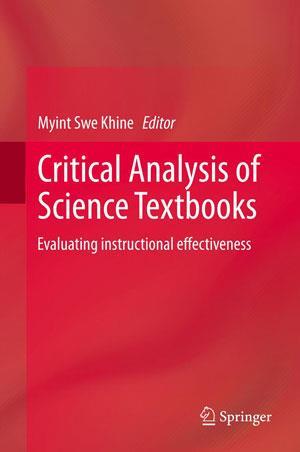

Critical analysis of science textbooks enlightens readers about how textbook analysis is a very rich domain to investigate and how textbooks influence science teaching and learning processes. The contributors to this book discuss the challenges and opportunities regarding textbook analysis and present their findings.
The book has 15 chapters and is organised in four parts. Each chapter deals with a different issue and this provides flexibility for readers. The opening section of the book introduces the criteria for evaluating the quality of science textbooks. It discusses the development of a graphical analysis protocol, an instrument that quantifies the type and quality of graphical representations and how they interact with textual material.
Part two covers textual and language analysis. Specifically, chapter five presents an analogy classification framework, which is employed to examine the use of analogy in science textbooks. I found this very helpful for researchers who study analogies in textbooks – a crucial issue in science education.
Part three presents several useful research efforts in the context analysis of the textbooks, and explores methodological issues in each chapter. Textbooks from different educational contexts, including England, the US, Finland and Australia, are examined. This variation provides an insight into both the textbooks and the curriculum reforms of different countries. Part four presents a practical overview of all sections of the book by summarising the findings and issues presented.
Although this book is aimed at researchers who study textbook analysis, I found it useful for science teachers and textbook authors as well. Furthermore, it provides particularly helpful starting references for novice researchers who plan textbook research projects, as it informs about current approaches in the scientific analysis of textbooks from multiple perspectives.